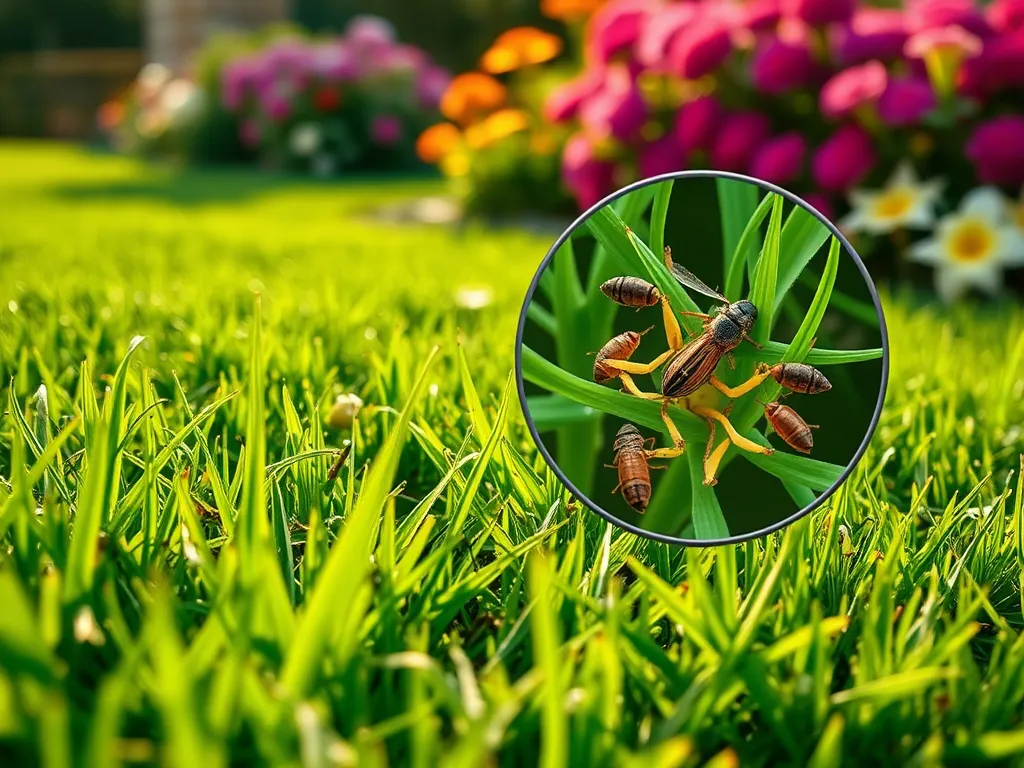Effective Strategies for Identifying Phoenix Lawn Pests

How to Identify and Treat Common Phoenix Lawn Pests
In Phoenix, maintaining a beautiful lawn can be challenging due to various pests that may infest the grass. Understanding how to identify and treat common Phoenix lawn pests is crucial for keeping your lawn healthy and vibrant. This article provides valuable insights into recognizing these pests and offers effective treatment options.
Pest infestations often manifest through specific symptoms like yellowing grass, irregular patches, and wilting. Learning how to identify and treat common Phoenix lawn pests involves careful observation and quick action to prevent extensive lawn damage. Homeowners should familiarize themselves with various pests and how they affect lawns in the Phoenix region.
The Phoenix climate plays a role in pest activity, with warm temperatures encouraging more frequent infestations. Being aware of seasonal changes can aid in recognizing pest problems early. This article delves deeper into the identification and control of common lawn pests, ensuring homeowners can take proactive measures against them.
From organic control methods to chemical treatments, there are numerous strategies for managing lawn pests. By knowing what pests are affecting your lawn and how to treat them, residents of Phoenix can maintain the lush, green spaces they desire. This guide will highlight specific pest management practices suitable for the unique climate of Phoenix.
For helpful tips on lawn insect identification, check out this guide.
Finally, understanding the lifecycle of lawn pests and implementing long-term lawn maintenance practices will support your efforts in pest prevention and management, leading to a healthier landscape and peace of mind for homeowners in Phoenix.
Identification of Common Lawn Pests
Recognizing symptoms of pest infestation is the first step in effectively managing lawn pests. Yellowing grass, irregular brown spots, and stunted growth can all indicate a pest problem. Look for wilting or thinning areas in your lawn, which often suggests that pests are affecting the roots or grass blades. Additionally, consider the presence of droppings or webbing, which are signs of certain pests like spiders or caterpillars.
Learn about natural pest deterrents that keep your garden safe.
Visual characteristics of common pests vary widely. For example, chinch bugs are small black insects with white wings, while whiteflies are tiny, winged insects that appear as clusters beneath leaves. Grubs are the larval stage of beetles and are typically white, C-shaped, and can be found just beneath the soil surface. Each pest has distinct traits that can help homeowners identify them accurately, facilitating faster treatment.
Discover the best pest control methods for your garden.
Seasonal pest activity in Phoenix is influenced by temperature changes. For instance, grubs often appear in spring and can be prevalent through summer, while chinch bugs are most active in warm months. Understanding these seasonal patterns helps residents monitor their lawns more effectively, allowing for early detection and intervention when needed.
Using traps for pest identification can be an effective strategy. Sticky traps placed around the lawn can help capture flying pests while monitoring their populations. Pheromone traps can attract specific pest species, giving homeowners a clearer understanding of which pests are present in their lawns and at what levels.
Treatment Options for Lawn Pests
Organic pest control methods include using natural pesticides made from plant extracts or beneficial nematodes that feed on grubs. Many homeowners in Phoenix prefer organic options due to their non-toxic nature, ensuring a safe environment for pets and children. Implementing companion planting strategies can also deter pests naturally.
Chemical treatment options involve the application of synthetic pesticides. Selecting the appropriate pesticide based on the specific pest is essential. Always follow application instructions and consider the timing of treatment for optimal effectiveness while minimizing environmental impact.
Preventative measures for lawn health play a crucial role in pest control. Regular mowing, watering, and aeration can lead to stronger grass that is more resilient against pests. Implementing proper fertilization and maintaining healthy soil can also contribute to the overall vigor of the lawn, making it less susceptible to infestations.
Natural predators and beneficial insects can be introduced to manage pest populations effectively. Ladybugs are great for controlling aphids, while parasitic wasps can help keep caterpillar populations in check. Encouraging these beneficial organisms naturally reduces the need for chemical interventions.
Specific Pests in Phoenix Lawns
Identifying Bermuda grass pests involves recognizing the specific threats posed to this common turf species. Common pests include sod webworms and cutworms, which can severely damage the grass if not treated promptly. Monitoring for signs such as chewing damage on grass blades or localized brown patches is essential to protecting your lawn.
Treatment for grubs in Phoenix lawns entails applying nematodes or specific insecticides during the appropriate season. Grubs are notorious for damaging roots, leading to yellowing and dying grass areas. Regular inspections can help determine if grubs are present and facilitate timely treatment.
Managing chinch bugs effectively requires understanding their life cycle and behavior. Application of insecticides in mid-summer can help control outbreaks when populations peak. Homeowners should monitor their lawns closely, especially during hot, dry periods when chinch bugs thrive.
Controlling whiteflies and aphids is often managed through a combination of insecticidal soaps and the introduction of predatory insects. Inspecting plants for signs of infestation—such as yellowing leaves or a sticky residue—can help homeowners take action before infestations escalate.
Lawn Maintenance Practices
Best practices for pest prevention include maintaining lawn health through adequate watering and regular mowing. Choosing the right grass varieties suited for the Phoenix climate can also contribute to a robust lawn. Focused attention on these maintenance techniques can create an environment less conducive to pest invasions.
Irrigation techniques to deter pests involve not overwatering, which can create wet conditions promoting pests like fungus gnats and grubs. Applying deep watering methods and scheduling irrigation during early morning hours can help keep moisture levels in check while nourishing the lawn effectively.
Fertilization schedules for lawn health should ensure balanced nutrient availability. In Phoenix, using slow-release fertilizers in the spring and fall aligns with grass growth cycles, providing essential nutrients without overwhelming the lawn, further reducing pest vulnerability.
Mulching and its role in pest control cannot be overlooked, as it promotes soil health and moisture retention while suppressing weeds. Organic mulches can deter pests and improve the overall ecosystem within the lawn environment, leading to healthier grass growth.
Long-term Pest Management Strategies
Integrated Pest Management (IPM) principles emphasize combining biological, cultural, and chemical practices to manage pests sustainably. Homeowners in Phoenix should adopt a holistic approach that reduces reliance on chemical pesticides, promoting long-term lawn health and pest resistance.
Monitoring and assessment plans involve regular lawn inspections and keeping an eye on pest populations. Calendars or logs can be useful for tracking pest activity and the results of treatment efforts, enabling timely adjustments and interventions as needed.
Soil health and its impact on pests are interconnected. Healthy soil microbes promote resilient grass and reduce pest infestations. Conducting soil tests can help homeowners understand nutrient levels and deficiencies, allowing for appropriate amendments and care practices.
Seasonal lawn care routines tailored to the Phoenix climate will considerably aid in pest management. Tasks such as overseeding in the fall, on-time fertilization, and seasonal pest inspections can help maintain a thriving lawn throughout the year.
